Iranians came to the streets en masse on Monday to mark the 40th anniversary of the revolution that brought their Islamic Republic to power. As always in Iran, the scenes reflected the full panoply of the country’s diverse and dynamic society; senior officials and stalwart defenders of the theocratic state mingled alongside those carrying signs denouncing the corruption within the post-revolutionary system.
For Iran’s leadership, the annual commemoration offered a reminder of the regime’s endurance and an opportunity for reassurance after an annus horribilis. Last year opened with an intense spasm of protests across the country, then was punctuated by the American withdrawal from the 2015 nuclear deal and re-imposition of economic sanctions, and ended with the demise of yet another mandarin of the revolutionary leadership who was once seen as a contender for the regime’s senior post.
While the epic volley of demonstrations that rocked the country last winter has mostly faded from the headlines, the convergence of pressures from within and without is pushing Iran’s post-revolutionary system steadily toward the brink. The tempo may have slowed and the furies seemed to ebb, but the upheaval laid bare public frustrations with the stalemate over Iran’s future that lies just beneath the fractious partisanship of its political establishment.
The convergence of pressures from within and without is pushing Iran’s post-revolutionary system steadily toward the brink.
It is an impasse that has confronted Iran since 1979, over how to reconcile the contradictions between the revolution’s ideological imperatives and the prerequisites of effective governance and diplomacy. The divergence within Iran’s political elites themselves on this question has generated a persistent competition among them, and a succession of attempts to reform the ruling system from within.
The latest iteration began with the 2013 election of President Hassan Rouhani. With his tempered slogan of “hope and prudence,” Rouhani promised to swing Iran toward a more responsible center via an agenda of economic reform and international engagement. Still, even before the Trump administration took aim at the 2015 nuclear deal, Rouhani’s policies fell short of redressing long-simmering disappointment with a system that staked its legitimacy on social justice. He is not quite halfway through his second and final term as president. But Rouhani’s model of moderation was already in ruins, much like every prior attempt to temper and rationalize the state that was forged in the aftermath of the 1979 revolution.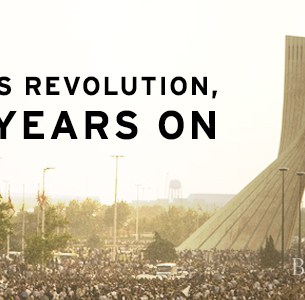
The boisterous celebration of the revolution’s anniversary can’t reverse the erosion in the value of the currency, nor can it restore Iranians’ patience with promises of evolutionary change. The repeated unravelling of gradualist approaches to overhauling post-revolutionary state highlights the fundamental dilemma facing Iran today: The system cannot be reformed sufficiently or successfully. Instead, the nature of the post-revolutionary state and its relationship with the world must be fundamentally transformed. In the Islamic Republic, that’s quite literally heresy—a reality that may help explain the ferocity of the passions on both sides of the debate that is unfolding inside Iran.
What this heralds for the Islamic Republic in the near term is neither revolution nor collapse, but rather a slow-motion metastasis that is echoing across the political establishment, the economy, and society. The trajectory is uncertain, but the repercussions are expanding the boundaries of Iran’s political imagination beyond the personality politics of the clerical state’s insular elite—Iranians are no longer asking simply who comes next in the 40-year procession of regime troubleshooters; rather, they are increasingly beginning to wonder what might come next.
This is an episode of monumental importance, a tectonic shift and one that is unfolding almost entirely beneath the radar of most of the Western media and under a shadow of uncertainty surrounding Iran’s future and its relations with the broader international community. The tumultuous history of Iran’s evolution should check any temptation toward easy optimism: Progress is rarely linear and given the Islamic Republic’s survival instincts, the political atmosphere within Iran is bound to get worse before it gets better. And thanks to the Trump administration’s decision to dismantle the 2015 nuclear agreement, the prospects for internal change in Iran have become even more inextricably entangled with the fierce passions around the relationship with Washington.
Still, the intense debate over the U.S. approach to Iran should not eclipse the rumblings of upheaval inside the country. Nor should the ham-fisted cheerleading for regime change among some corners of Team Trump short-circuit a necessary deliberation over the role for the international community during this unpredictable period in Iran. In fact, the confrontational U.S. strategy only heightens the need for a clear-eyed assessment of Iran’s domestic dynamics and the implications of U.S. policies. For the past four decades, Iran’s domestic politics have had an outsized impact on regional security and American policy. What does it mean for Washington and the world if all the assumptions of the past 40 years about Iranian politics are beginning to crumble?
A swing toward change?
The annals of Iran analysis are littered with prognostications of doom that ultimately proved premature.
Any forecast of change within Iran invites argumentation. The annals of Iran analysis are littered with prognostications of doom that ultimately proved premature, at least in part because of the tendency for enthusiasm to overtake common sense. Some critics of the post-revolutionary regime perennially see a course correction just around the corner; for Washington’s inveterate regime changers, Iran’s supreme leader has been on his deathbed for decades. The scent of opportunity has revived the small but rabid personality cults around the former Pahlavi crown prince and the even more discredited left-wing terrorist group, the Mojahideen-e Khalq. In impassioned postings, online activists berate anyone who dares question the imminence of #IranRegimeChange.
The faith is strong, but the proof has been stubbornly absent. Iran has endured every crisis short of the plague—revolution, war, tribal uprisings, terrorism, earthquakes, drought, and routine episodes of internal unrest—but still, the nezam (the system) endures. The Islamic Republic’s staying power has engrained a considerable skepticism toward the very concept of a revolutionary redux. Indeed, some saw the intense interest in the protests that swept the country a year ago as yet another case of wishful thinking, and their apparent dissipation seemed proof that the international media overhyped the upheaval.
But for all the false prophecies inspired by Iran, it is equally important to question the strangely static conventional wisdom that has taken root among academics and policy analysts alike. This assessment emphasizes Iran’s internal coherence, the equilibrium among its perennially warring factions, and its citizens’ understandable aversion to revolutionary change, born of four decades of post-revolutionary disillusionment as well as the disastrous outcome of more recent upheaval in neighboring states. By this logic, gradualism remains the preferred approach of most Iranians; to suggest otherwise is to be branded a simpleton, an ideologue, a war-monger, or all three.
Like any dogma, the gospel of the Islamic Republic’s durability is vulnerable to the inconvenient forces of reality. The presumption of Iranian stability is always true, until it is not, since it is challenged by recurrent convulsions that are never anticipated by the cognoscenti. Iran’s contested internal landscape, with a fractious elite and routine opportunities for limited political voice, may be the Islamic Republic’s hidden strength, but the deep challenges to the existing order have never been fully suppressed or satisfied. And just as in the 1970s, Americans tend to overestimate the continuing resilience of the regime.
For this reason, the prospect of meaningful change in Iran forever lies somewhere between unthinkable and inevitable. At the moment, signs suggest that the pendulum may be swinging toward change.
The Brookings Institution is committed to quality, independence, and impact.
We are supported by a diverse array of funders. In line with our values and policies, each Brookings publication represents the sole views of its author(s).

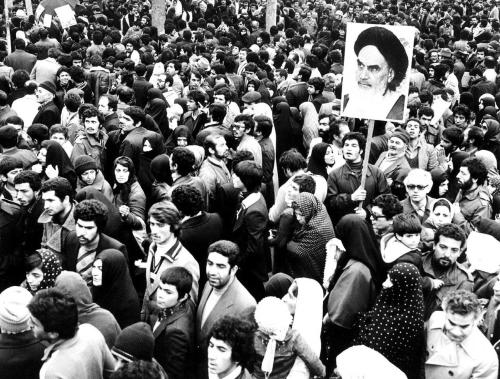

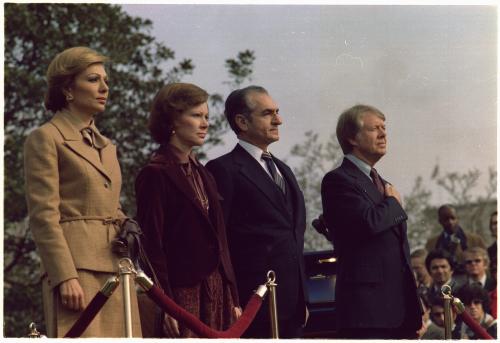
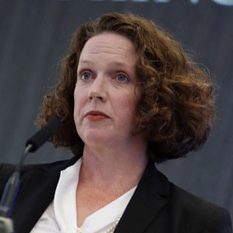


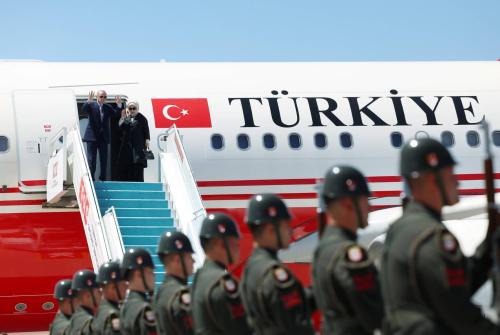
Commentary
After 40 years, is Iran’s revolution unravelling?
February 12, 2019